Video: How to get the best from your sprayer
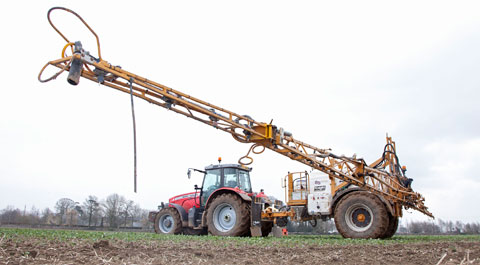
Sprayers are one of those bits of kit that need a good dollop of TLC to keep them running at their best.
We talked to 2012 Farm Sprayer Operator of the Year, James Stafford, to see how he keeps his spraying outfit on track throughout the season.
Mr Stafford farms 200ha in Corsham, Wiltshire and including contract work he sprays about 1,620ha a year. This is all carried out with a 3,000-litre Knight trailed sprayer, that’s fitted with a 24m boom.

1. Nozzles
Carry a range of nozzles on the sprayer and make sure there’s something suitable for different products and conditions.
Coarser, air inclusion nozzles are a good choice when there’s a higher chance of drift, while finer flat fans will give better efficacy – these can only be used in ideal conditions, though.
On Mr Stafford’s sprayer:
- Syngenta Defy – Specialist nozzle used for pre-emergence herbicides and for fungicide applications up to T1. These are mounted forwards and backwards on alternate nozzle bodies to give the best coverage. These are less susceptible to drift than a flat fan, but still give good efficacy
- Hypro 03 Guardian Air – general, low drift air inclusion nozzle used at speeds up to 14kph
- Hypro 025 Guardian Air – this is the same design as above, but is suitable for lower speeds of 12kph. It’s ideal for smaller fields where it’s hard to get up to top speed
- 02 flat fan – this is used in good conditions as it has a very fine spray and helps improve coverage and efficacy of products for blackgrass control such as Atlantis
- Fitting a rotating nozzle body makes it much quicker to switch between nozzles. If there are two lines on the sprayer it’s even easier to flick between the two favourites
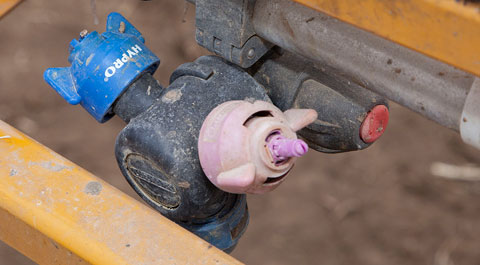
2. Carry plenty of spare parts
It seems obvious, but so many people don’t carry the right spare parts to get them out of a fix. Here’s a checklist of the essentials to keep on board:
- Spare nozzles
- Nozzle caps
- A couple of nozzle bodies
- Bolts for nozzle bodies
- Selection of pipe fittings and jubilee clips
- Extra pair of gloves
- Disposable spray suit
- Spare measuring jug
- Ramsay seal kit – this should be changed every one or two years depending on the amount of work the sprayer does, but it’s sensible to keep one on the sprayer, too
- Simple spill kit – sealable bucket, bag of cat litter, spade and some plastic bags. If you get a spill when in the field pour on the cat litter, let it absorb the chemical, scoop into the bag and then seal in the bucket
- Old toothbrushes for cleaning blocked nozzles
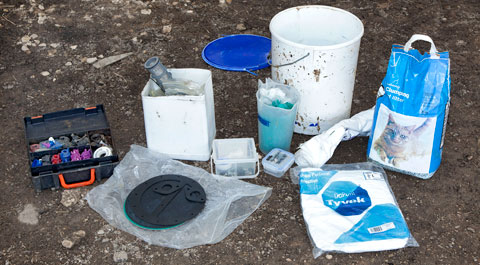
3. In-cab technology
There’s plenty of technology out there to make life easier for the operator in the cab.
Mr Stafford’s tractor is fitted with a standard rate controller and he’s looking to upgrade to GPS auto steer and auto section control.
Putting steering in the hands of the computer means he won’t have to faff around with the foam blobber when spraying grassland. And the auto section control should reduce over spray and cut chemical bills.
But the biggest bonus for him so far has been investing in an iPad and installing Gatekeeper mobile so he can update spray records in the field. This means he has no paperwork to do once he gets back into the office.
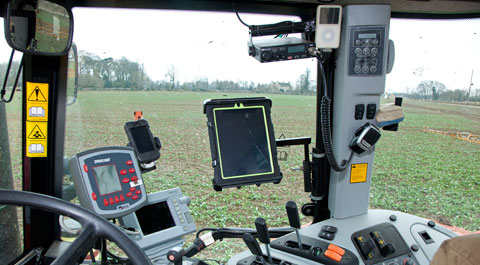
4. Faster filling
Filling is one of the bigger opportunities to save time when spraying so it’s important to have a slick system for getting chemical in the tank. Here are a few pointers:
- Switching the induction hopper’s standard rinsing nozzle for a spinning one will speed up can rinsing and put an end to shaking and swirling containers. These also do a good job of washing container lids – just push them down on the top of the nozzle
- Kits are also available to add a second, high-pressure nozzle for shifting the most stubborn residues
- Building a simple, bunded container for laying out chemicals, will also save time and contain any spills – Mr Stafford built his out of an old front tank. A washed container drying rack is another useful addition
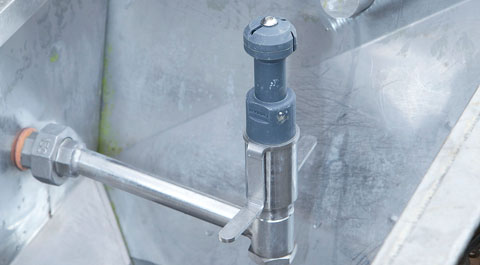
5. Boom height and setup
It sounds pretty simple, but hanging a cable tie cut to 50cm from the boom will help operators keep the boom just the right height above the crop.
It’s also important to make sure boom pivots are well greased and the break-back sections aren’t ceased. Any extra stress at these points can cause fractures and mean a run back to workshop.
If the worst does happen, a pack of heavy-duty cable ties is useful for temporary repairs – it’s amazing what they can hold.
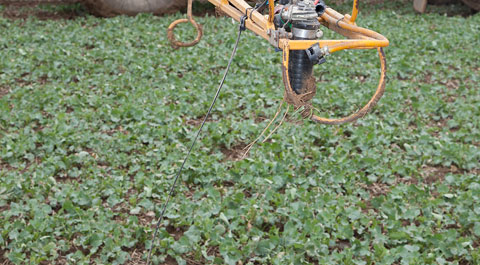
6. Cold weather care
Remembering to pump the sprayer full of antifreeze every time there’s a cold snap gets pretty tedious.
A quicker fix is to fit a series of quick couplers at some of the lower parts of the sprayer’s plumbing. These can be snapped off in the field so the sprayer drains completely. Key areas to put these are underneath the tank pressure gauge, on either side of the boom and on the agitator circuit.
Doing this and running the pump dry in the field with the drain plugs out means there’s no need for antifreeze.
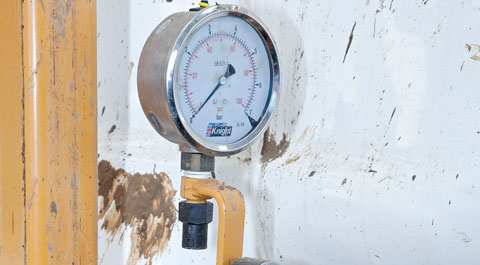
7. Water volume
Possibly the biggest time saver of all is dropping water volume down to 100-litres/ha. Most products perform better at higher concentrations such as this and it means the sprayer can cover a lot more ground to each fill.
It’s a pretty simple calculation – at 100-litres/ha a 3,000-litre tank can cover 30ha, compared with 20ha at 150-litres/ha.
Another simple tip for those considering switching sprayers is to opt for a bigger tank than needed. It doesn’t need to be filled to the brim every time and it means you’ve got much more flexibility. The cost isn’t usually much more either.
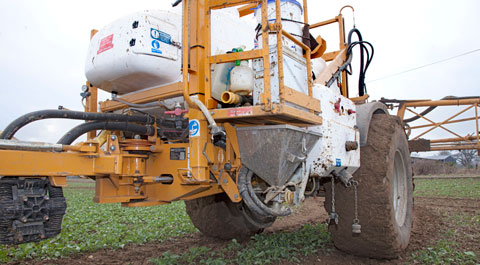
8. Speed
Faster operating speeds are clearly going to allow you to cover more ground. But when upping speeds it’s important to fit the right nozzle. Those that want to get up to speeds of 16kph – not so easy with a trailed machine – will need something like a 035 air inclusion to get the right spray pattern.
It’s also important to drop to a smaller 03 or 025 nozzle when in smaller fields that dictate slower speeds.
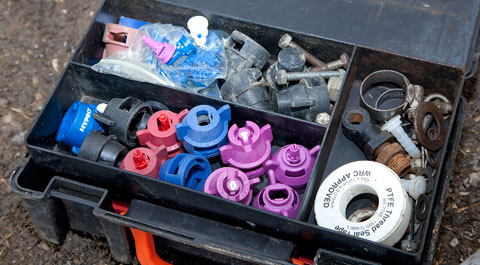
9. Protection
When spraying in sticky conditions it’s a good idea to protect fragile parts of the sprayer from flying mud. Nozzle bodies are particularly vulnerable so it’s worth putting some sort of barrier in front of those that are in the mud’s flight path.
Mounting a big set of mud flaps off the drawbar will also help prevent the sprayer getting covered in the mud that’s flying off the tractor wheels.

10. Carrying chemical
Mr Stafford has built a handy lockable box for carting chemical out to the field. This can be mounted on the front linkage and means products can be stored safely on the machine without getting in the way.
He’s also plumbed in a water supply at each of his furthest locations from the farm so that he can fill without having to run back to the yard.
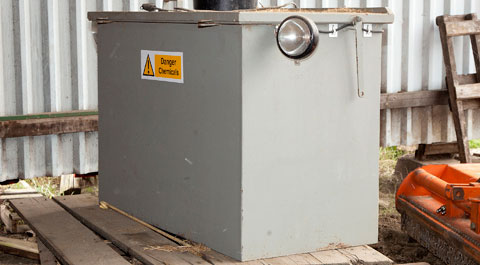
Part 1
Part 2
Part 3
More from our Getting the best from series:

